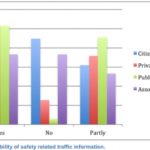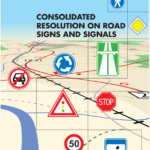Items Under Tag: equipment

The European Transport Safety Council (ETSC) has released a new film that is calling the European Commission to require the fitting of Seat Belt Reminder Systems in all passenger seats in new cars when it reviews vehicle safety regulations later this year. The short video highlights thecritical importance of seat belt wearing to prevent serious injury and death and cites research showing that up to a quarter of rear seat passengers are still failing to belt up. Seat Belt Reminder systems are already required on drivers’ seats thanks to the last update to vehicle safety regulations in 2009. The film features experts in vehicle safety, post-collision rehabilitation and police enforcement. 

The European Transport Safety Council (ETSC) has released a new film that makes the case for making overridable Intelligent Speed Assistance (ISA) a standard feature on all new vehicles in Europe. The five-minute video has been launched as the European Commission continues work on the development of the next generation of vehicle safety standards, expected to be launched later this year. A major study published last year by the European Commission found that Intelligent Speed Assistance (ISA) is one of several new vehicle technologies which are now suitable for mandatory fitting on new cars as they are ‘feasible in terms of the technology required’, already available on the market and offer a positive benefit-cost ratio. 

The 4th Edition of the Road Safety and Simulation 2013 (RSS 2013) Conference was organised by the University of Roma Tre and took place in Rome on 23-25 October 2013, with the participation of more than 250 scientistists from more than 45 countries. Special emphasis was put on driving simulationand how this tool can improve roadway design and the study of emerging technologies that take into consideration human factors as well and their effects on safety. 
NTUA Associate Professor Matthew Karlaftis in a key note speech highlighted the “Conflicting Objectives and Modeling Implications in Road Safety Data Analysis”. 
NTUA presentations concerned:

This report is the analysis of the responses to this online public consultation on “The provision of road safety related minimum universal traffic information free of charge to users under the ITS Directive” launched by the European Commission in March 2012 on Your Voice in Europe. In the public consultation, respondents indicate a strong belief that safety related traffic information contributes to road safety. They show broad support for action by the EC to ensure the provision of road safety related traffic information, free of charge, to users across Europe and they strongly support the harmonisation of the means of dissemination, and the definition of a uniform presentation of safety related traffic information to the end-user. 

In September 2010, UNECE published the report “Consolidated Resolution on Road Signs and Signals”. The concept of ‘self-explanatory’ roads encompasses many different elements of the design, layout and operation of the road network. However, this term serves well to illustrate the need to create an environment that can be easily understood and safely operated by all its users. The Road Safety Forum has been mandated by the United Nations General Assembly to review this fundamental area and to make provisions for road signs and signals that are in line with the requirements of ever growing motorization. 






















































































































































































